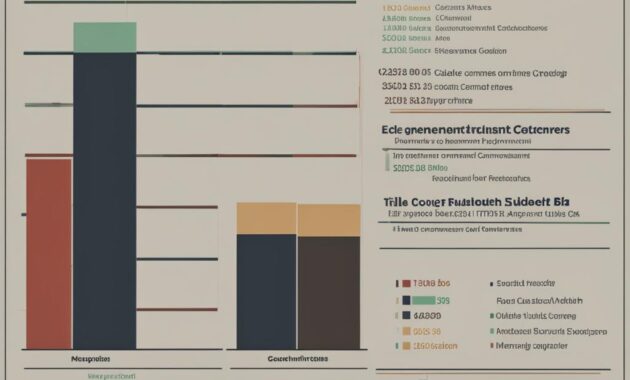As a professional copywriting journalist, we are excited to explore the fascinating landscape of fiscal policies worldwide with you. In this section, we will conduct a comparative analysis of different countries’ approaches to fiscal policies and gain insights into their diverse economies.
Fiscal policies play a crucial role in shaping a country’s economic landscape. By examining the fiscal policies of different nations worldwide, we can understand how governments manage their economies to achieve economic growth and stability. The comparative analysis of fiscal policies also provides us with a global perspective on the diverse approaches taken by governments to address economic challenges.
Join us in this journey to explore fiscal policies worldwide, and let’s gain a deeper understanding of the nuances of diverse economies.
Understanding Fiscal Policies and Their Impact
As we continue our exploration of fiscal policies, it’s essential to understand their impact on economic stability. Fiscal policies refer to the government’s decisions on how to spend money and collect revenue, primarily through taxation. These policies have far-reaching effects on the country’s economy, and it’s crucial to analyze them in-depth to make informed decisions.
The impact of fiscal policies on a country’s economy is complex and multifaceted. Government spending plays a critical role in shaping the economy, and fiscal policies determine how much money the government can spend on different sectors. For instance, increased government spending on infrastructure can create more jobs and stimulate economic growth. However, excessive government spending can lead to inflation, which can destabilize the economy.
Taxation is another critical component of fiscal policies. Taxes generate revenue that allows the government to fund its activities. However, high tax rates can discourage businesses and investors, leading to decreased economic activity. Conversely, low tax rates can stimulate economic growth and attract investment, but they can also lead to revenue shortfalls.
To understand the impact of fiscal policies on economic stability, we need to look at a range of economic indicators. These include gross domestic product (GDP), inflation, unemployment, and the government budget deficit or surplus.
| Economic Indicator | Definition |
|---|---|
| Gross Domestic Product (GDP) | The total value of goods and services produced in a country in a specific period, typically a year. |
| Inflation | The rate at which the general level of prices for goods and services is rising, typically measured as an annual percentage increase. |
| Unemployment | The percentage of the labor force that is unemployed and actively seeking employment. |
| Government Budget Deficit or Surplus | The difference between government spending and revenue in a particular period. |
By analyzing these indicators, we can gain insights into how fiscal policies are impacting the country’s economy. For example, a high government budget deficit might indicate that the government is spending more than it’s generating in revenue, which can lead to long-term economic instability.
Overall, understanding fiscal policies and their impact is crucial for building a stable and prosperous economy. By carefully analyzing the government’s spending and taxation decisions, we can make informed decisions that drive growth and development.
Fiscal Policies in the United States
When it comes to fiscal policies, the United States follows a unique approach, which sets it apart from the rest of the world. The country’s government budget is a reflection of its economic priorities, and it has a significant impact on the overall health of the economy.
The government budget is an essential tool for implementing fiscal policies in the United States. It is used to manage public resources and regulate economic activity. The budget is divided into two categories, discretionary and mandatory spending. Discretionary spending includes programs such as defense, education, and healthcare, whereas mandatory spending includes social security and Medicare.
| Year | Total Government Budget (in billions of dollars) | GDP Growth Rate |
|---|---|---|
| 2017 | 4,094 | 2.4% |
| 2018 | 4,411 | 2.9% |
| 2019 | 4,445 | 2.2% |
The table above shows the government’s total budget and the corresponding GDP growth rate from 2017 to 2019. As we can see, the budget has been steadily increasing, and the growth rate has been relatively stable. This suggests that the government’s spending has not significantly impacted the economy.
However, it is essential to note that the United States has a high national debt, which could have long-term implications for the economy. The debt is primarily a result of the government’s budget deficit, which occurs when spending exceeds revenue. The deficit has been growing, and it is projected to reach $3 trillion in 2021.

The image above highlights the government’s proposed budget for 2022. The government plans to allocate funds for various programs, such as education, healthcare, and infrastructure. It also includes proposed tax reforms, which aim to increase revenue and reduce the budget deficit.
The Importance of Economic Indicators
Economic indicators are statistics that provide valuable information about the economy’s health. They help policymakers and businesses make informed decisions about economic activity. In the United States, there are several key economic indicators that are closely monitored, including inflation, unemployment, and GDP.
Monitoring economic indicators is crucial for understanding the impact of fiscal policies on the economy. For example, if the government decides to increase spending on a particular program, it could lead to higher inflation or increased debt. Similarly, if the government implements tax reforms, it could lead to changes in consumer behavior and economic growth.
Overall, fiscal policies in the United States play a significant role in shaping the country’s economy. While the government’s budgetary decisions have not significantly impacted the economy in recent years, it is essential to monitor economic indicators closely to ensure long-term economic stability.
Conclusion
Throughout this article, we have explored the fascinating landscape of fiscal policies around the world. Our comparative analysis has provided us with valuable insights into the diverse approaches taken by governments to manage their economies.
By understanding the concept of fiscal policies and their impact on economic stability, we can make informed decisions about the best course of action for our own country.
The Importance of a Global Perspective
It is essential to have a global perspective when analyzing fiscal policies. Each country faces unique challenges and opportunities, and there is no one-size-fits-all solution. By conducting a comparative analysis of fiscal policies worldwide, we can learn from each other and adapt our strategies accordingly.
The Role of Comparative Analysis
Comparative analysis is a powerful tool that allows us to gain insights into the efficacy of fiscal policies. By examining the outcomes of different approaches taken by governments, we can determine the most effective course of action for our own country.
Furthermore, comparative analysis can help us identify the strengths and weaknesses of our own fiscal policies, and make improvements where necessary.
Final Thoughts
Fiscal policies are a crucial component of any country’s economic strategy. By understanding their impact and conducting a comparative analysis of policy approaches worldwide, we can make informed decisions and contribute to the ongoing discourse on economic policies.
As we continue to navigate the complexities of an ever-changing global economy, maintaining a global perspective and utilizing comparative analysis will be essential for achieving long-term economic stability and growth.




